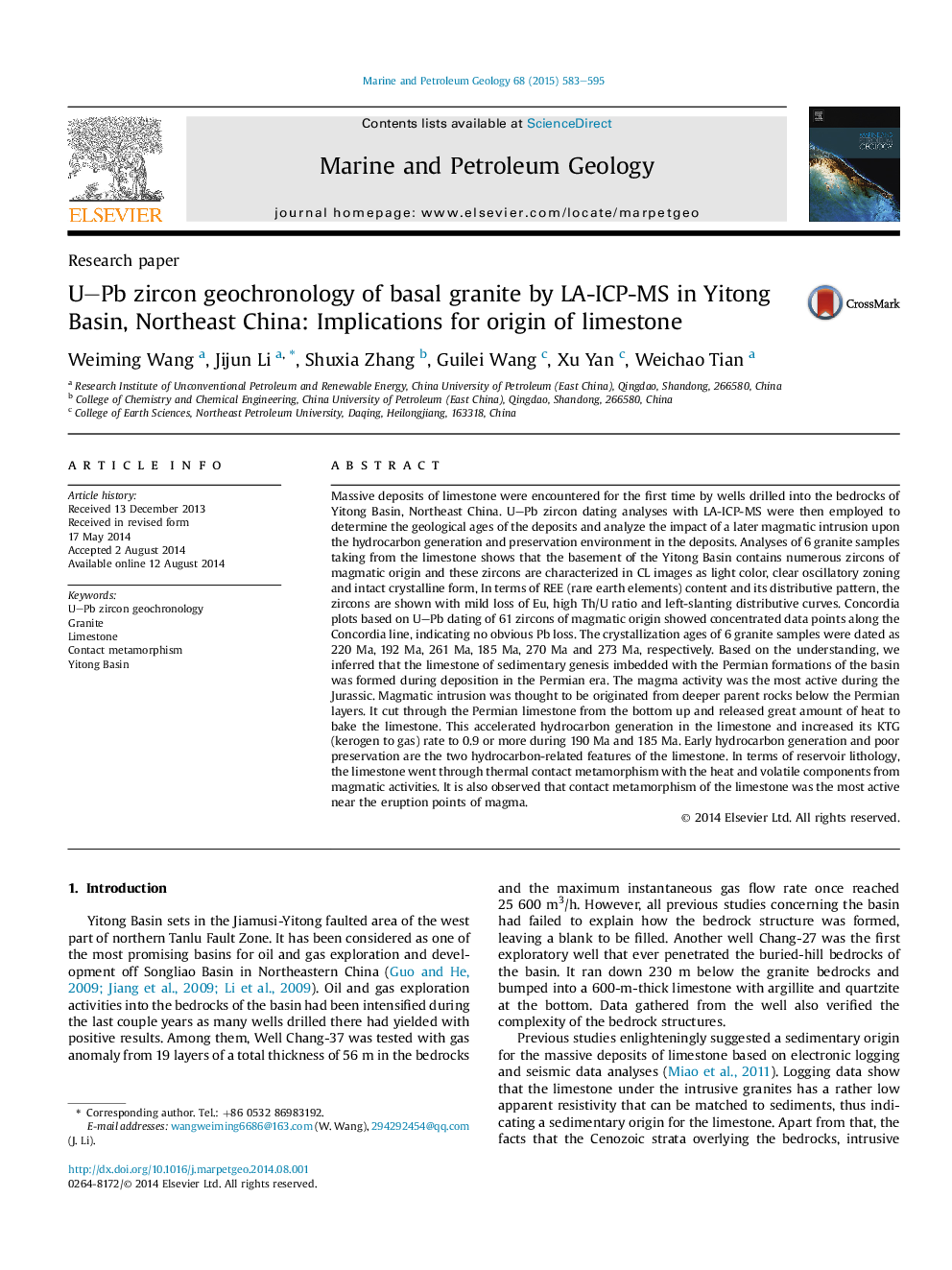| کد مقاله | کد نشریه | سال انتشار | مقاله انگلیسی | نسخه تمام متن |
|---|---|---|---|---|
| 6435124 | 1351611 | 2015 | 13 صفحه PDF | دانلود رایگان |

- Determine the ages for limestone encountered for the first time by wells drilled in Yitong Basin.
- CL images and REE distributive pattern were used in screening out suitable zircons of magmatic origin for experiments.
- The impact of magmatic intrusion upon hydrocarbon generation and preservation of the limestone.
Massive deposits of limestone were encountered for the first time by wells drilled into the bedrocks of Yitong Basin, Northeast China. U-Pb zircon dating analyses with LA-ICP-MS were then employed to determine the geological ages of the deposits and analyze the impact of a later magmatic intrusion upon the hydrocarbon generation and preservation environment in the deposits. Analyses of 6 granite samples taking from the limestone shows that the basement of the Yitong Basin contains numerous zircons of magmatic origin and these zircons are characterized in CL images as light color, clear oscillatory zoning and intact crystalline form, In terms of REE (rare earth elements) content and its distributive pattern, the zircons are shown with mild loss of Eu, high Th/U ratio and left-slanting distributive curves. Concordia plots based on U-Pb dating of 61 zircons of magmatic origin showed concentrated data points along the Concordia line, indicating no obvious Pb loss. The crystallization ages of 6 granite samples were dated as 220Â Ma, 192Â Ma, 261Â Ma, 185Â Ma, 270Â Ma and 273Â Ma, respectively. Based on the understanding, we inferred that the limestone of sedimentary genesis imbedded with the Permian formations of the basin was formed during deposition in the Permian era. The magma activity was the most active during the Jurassic. Magmatic intrusion was thought to be originated from deeper parent rocks below the Permian layers. It cut through the Permian limestone from the bottom up and released great amount of heat to bake the limestone. This accelerated hydrocarbon generation in the limestone and increased its KTG (kerogen to gas) rate to 0.9 or more during 190Â Ma and 185Â Ma. Early hydrocarbon generation and poor preservation are the two hydrocarbon-related features of the limestone. In terms of reservoir lithology, the limestone went through thermal contact metamorphism with the heat and volatile components from magmatic activities. It is also observed that contact metamorphism of the limestone was the most active near the eruption points of magma.
Journal: Marine and Petroleum Geology - Volume 68, Part A, December 2015, Pages 583-595